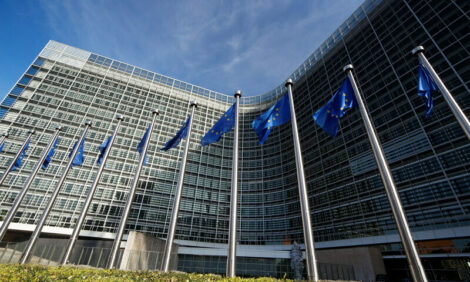



Level Supplies to Benefit from EU Production Drop
ANALYSIS – Although faced with rising production costs and a challenging breeding season, the US hog market could be buoyed by limited US beef and EU pork supply, according to Rich Nelson, Chief Strategist at Allendale Inc.Hog producers made losses over the last two quarters of 2012 but analysts at Allendale Inc. are predicting level supplies to bring a break even picture in the latter half of 2013.
Speaking at the Allendale Ag Leaders Conference, Rich Nelson discussed USDA hog industry figures. USDA reports were expected to show producer liquidation due to corn and soy bean price pressure, however numbers stood firm with some light expansion plans occurring.
“I have a little scepticism about the overall government numbers but the bottom line is the hog industry is not going to suffer long term," he said. “Production costs last year were at $200 a head and high costs are mainly tied into the issue of feed prices.”
“We will see costs drop about $40 per head; that’s based on where corn and soya bean futures have been. If these prices change we could see some costs take a hit,” Mr Nelson said.
He then reviewed the 2012 summer season suggesting that herd number reductions could result from the hottest summer since 1970.
Contrary to USDA reports quoting a new national litter record of 10.13 pigs Mr Nelson referenced some producers who had seen 15-20 per cent pig litter reductions. In the hot summers of 1988 and 1983 the US herd performance was hurt by herd heat stress which is why Mr Nelson has further reservations over USDA breeding statistics.
“I would question the USDA on two counts; firstly, on the idea that producers expanded and secondly, on productivity, added Mr Nelson. "We might see a short fall in market ready hogs compared to what the USDA told us, through March and into May time."
As for the supply outlook, Mr Nelson added that a one per cent drop in production will be countered by a one per cent efficiency increase. High winter supplies trend down to low summer supplies which is why slaughters lifted 1-2 per cent into February.
Production forecasts from Allendale are for similar levels to 2012, said Mr Nelson. He added that with steady supply the market will depend on demand issues.
“The EU is the second biggest pork exporter behind the US,” Mr Nelson added. “The USDA has the EU leading the way for 2013 with a 4 per cent export rise. But given early 2012 regulatory changes, this does not make sense.”
Contradicting the USDA, Mr Nelson stated that banning gestation crates has put huge pressures on EU producers who face rising costs of production and the added problem of converting their buildings to fit in with sow stall legislation.
“All EU-based pork organisations are noticing production downturn and members are leaving. In the UK there has been a decline of 10 per cent seen in producer numbers,” he added.
“We are going to see our competition drop. The government forecast of a 1 per cent pork export increase for the US but this is not realistic. Figures will lift more than that- around 3-5 per cent.”
Russian opposition to the use of the growth promoter ractopamine was dismissed by Mr Nelson who reasoned that economic impact is going to be limited from countries outside the big four export destinations of Japan; China and Hong Kong, Mexico and Canada.
As a buyer, Russia sits behind these nations and although recent headlines have focused on Russia, the drop in EU production will far ‘overshadow’ import restrictions, he said.
With rising EU demand and less beef competition, pork prices will move to a premium which will force a futures lift above last summer’s highs of 102. Mr Nelson suggested that summer highs could ‘conservatively’ reach 105.
This, Mr Nelson concluded, was the reason for August cash hog movements of $20 as longer term buying could be met with reasonable upsides.
The big futures story from Allendale Inc. centred on feed costs altering to bring change in 2013 price projections, but Mr Nelson emphasised that the long term meat demand theme is still in place.









